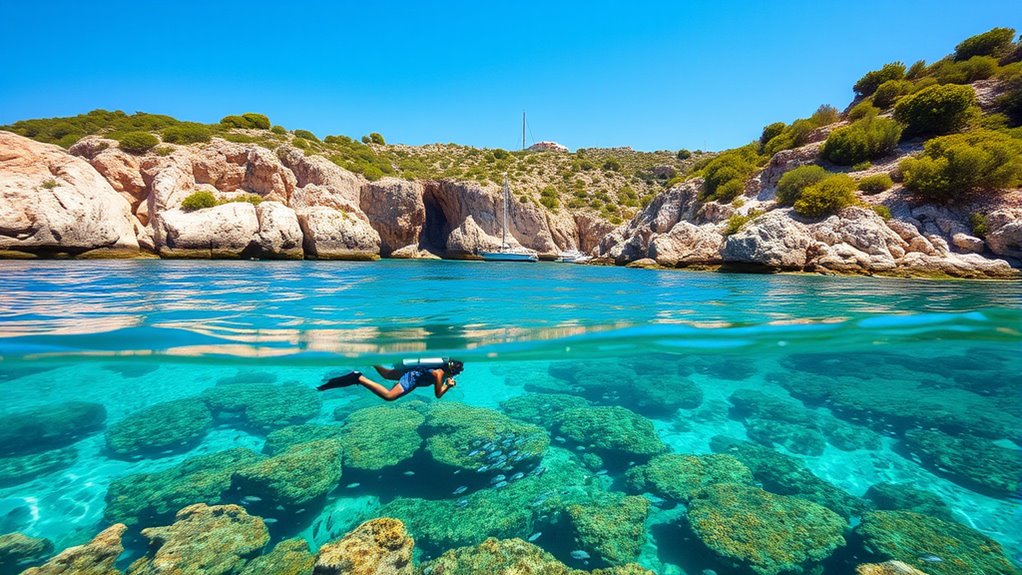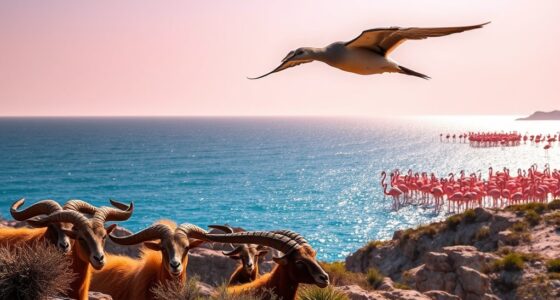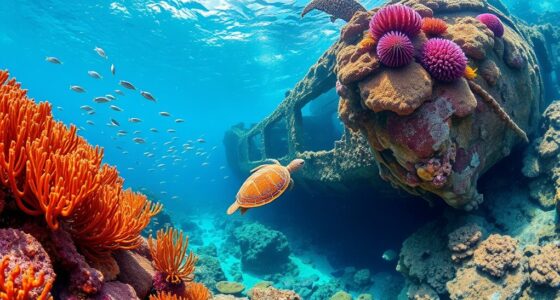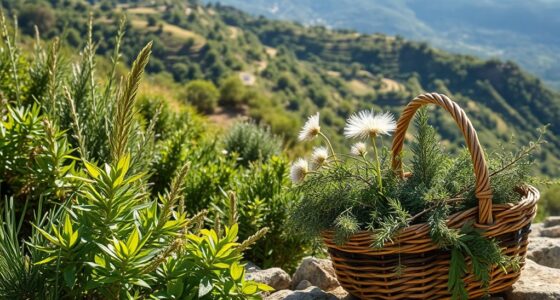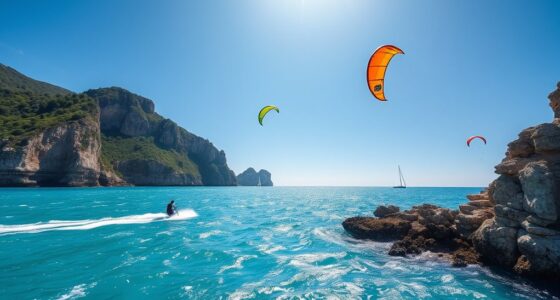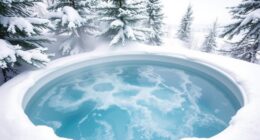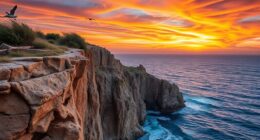Near Alghero, you’ll find the Capo Caccia-Isola Piana Marine Protected Area, a haven for marine life and stunning landscapes. This protected zone hosts diverse habitats like Posidonia meadows, coralligenous reefs, and species such as red coral, dolphins, and seabirds. Regulations help preserve these ecosystems while allowing responsible activities like guided boat trips, snorkeling, and hiking. Staying within the rules lets you enjoy the area’s beauty without harming it—there’s much more to discover here.
Key Takeaways
- The Marine Protected Area near Alghero extends from Punta delle Gessiere to Capo Galera, including Porto Conte.
- It safeguards diverse habitats like Posidonia oceanica meadows, macroalgae, and coral communities.
- Key protected species include giant newts, brown groupers, red coral, and seabirds such as Audouin’s gull.
- Regulations require permits for activities like fishing, diving, and anchoring, with restrictions on vessel speed and anchoring zones.
- Organized eco-tourism and research initiatives promote sustainable use and conservation of the marine environment near Alghero.
Overview of the Capo Caccia-Isola Piana Marine Protected Area
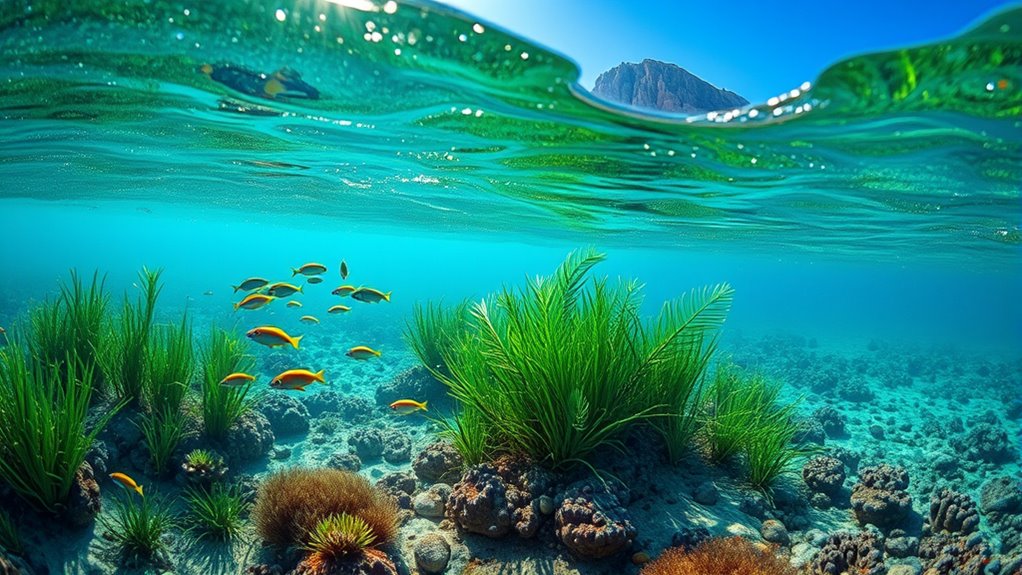
The Capo Caccia-Isola Piana Marine Protected Area (MPA) is a essential ecological sanctuary located northwest of Sardinia, within the municipality of Alghero. It stretches from Punta delle Gessiere in the north to Capo Galera in the south, covering the Porto Conte area. The MPA features iconic coastal landmarks like the Capo Caccia cliffs, Punta Giglio, Isola Piana, and Neptune’s Grottoes. Established in 2002 by Italy’s Ministry of the Environment, it is recognized under EU conservation directives and UNESCO’s Geomineral Park of Sardinia. The area is divided into zones with varying protection levels—full reserves, general reserves, and regulated zones—allowing limited human activities. It’s a critical site for biodiversity, landscape beauty, and sustainable tourism. Understanding marine protected areas is essential for appreciating their role in conserving marine ecosystems.
Key Species and Habitats Conserved in the MPA
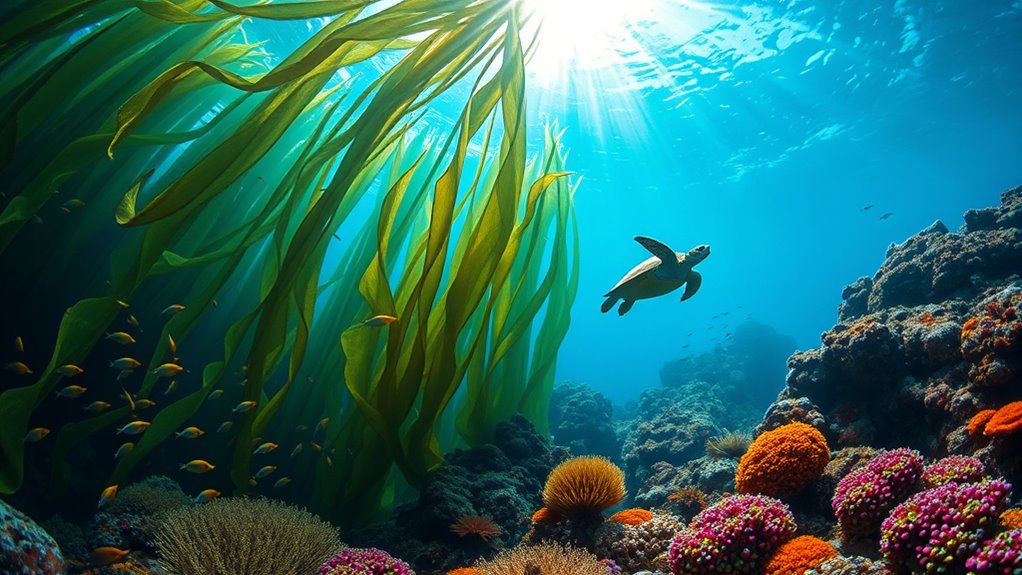
Among the diverse landscapes and protected zones within the Capo Caccia-Isola Piana Marine Protected Area, a variety of key species and habitats thrive thanks to targeted conservation efforts. You’ll find protected fauna like the diadem urchin, giant newt, and sea date, along with large predators such as brown groupers, moray eels, and lobsters inhabiting rocky bottoms. The Noble pen shell, the largest Mediterranean bivalve, highlights ecological significance. Crucial habitats include Posidonia oceanica meadows, macroalgae like Padina pavonica and Cystoseira, and red algae groups that add habitat complexity. Coral and gorgonian communities, featuring red coral and yellow gorgonians, enhance reef structure. Additionally, seabirds like Audouin’s gull, shearwaters, and storm petrels nest here, supported by caves, rocky seabeds, and sandy bottoms, all under strict protection. Marine protected areas play a vital role in conserving these species and habitats, providing a sanctuary for marine biodiversity. Protecting these ecosystems also helps maintain the marine food chain and overall resilience of the marine environment.
Regulations and Activities Within the Protected Zone
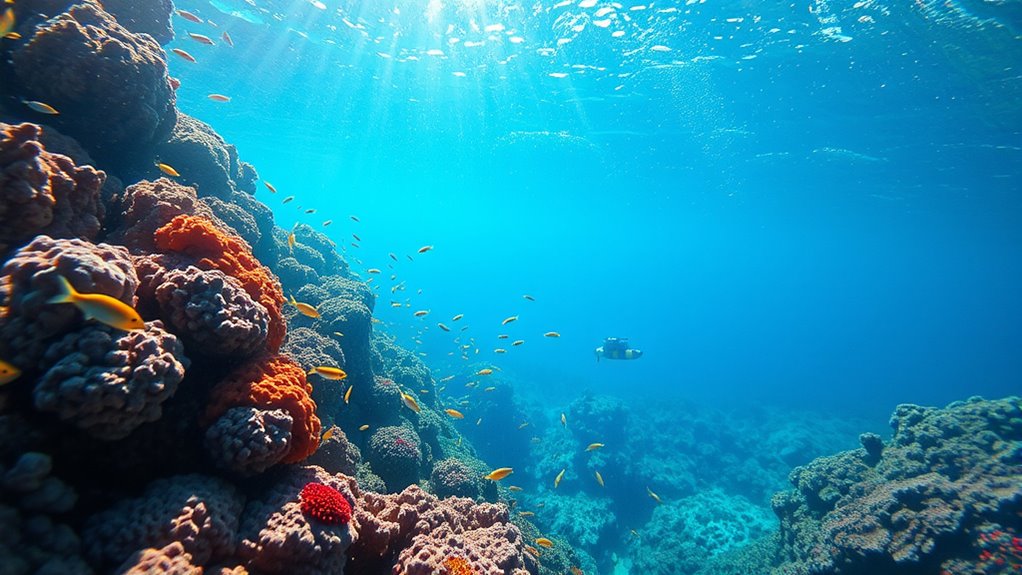
Within the Marine Protected Area near Alghero, zoning and access regulations carefully balance conservation efforts with human activities. You’ll find zones with specific rules: entry often requires prior authorization, especially in high-protection areas where anchoring is forbidden. Lower zones permit anchoring for small boats, but speed limits of 7 knots within 300 meters of shore are strictly enforced. Certain areas near the port restrict transit, mooring, fishing, bathing, and underwater activities. If you plan to fish, dive, or anchor, you must obtain permits via the MPA website or local operators. Violations, like unauthorized anchoring or fishing, face penalties. Use of motorized vessels is restricted in sensitive zones to protect habitats, and pollution or waste discharge is strictly forbidden to preserve water quality. Permits are essential for engaging in activities that impact marine flora and fauna, ensuring compliance with environmental and safety regulations. Additionally, cookie management policies are in place to inform visitors about data collection practices related to site usage and activity monitoring.
Opportunities for Sustainable Tourism and Recreation
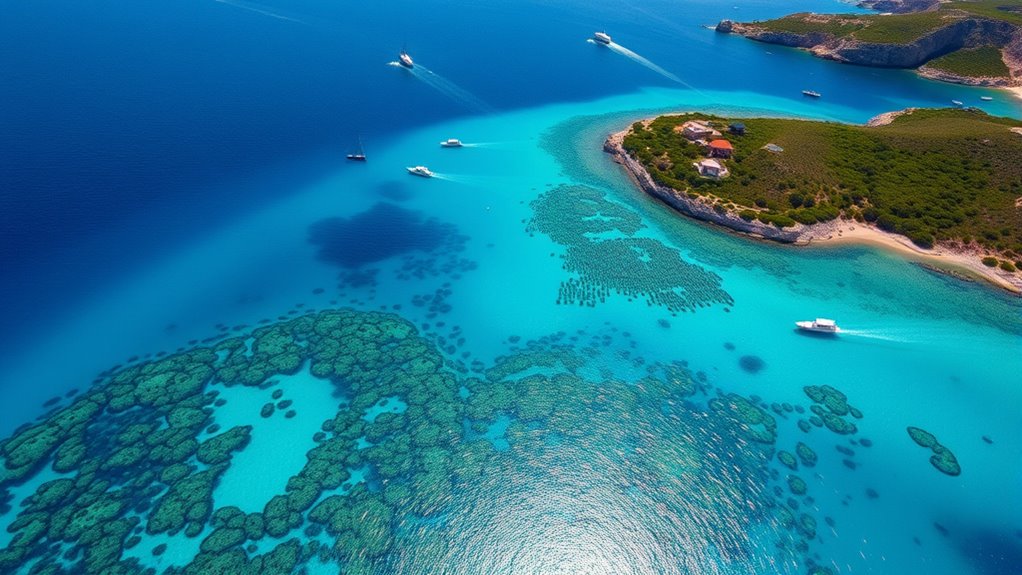
Sustainable tourism in Alghero’s Marine Protected Areas offers a balanced way to enjoy the region’s natural beauty while conserving its delicate ecosystems. You can explore marine sites like Capo Caccia and the Gulf of Porto Conte through organized boat trips, which reduce individual impact and protect sensitive habitats. Activities such as snorkeling, diving, and wildlife viewing allow you to connect with the marine environment responsibly. Hiking and cycling trails nearby add land-based recreation options that support conservation efforts. Visitor limits and regulated excursions help prevent overtourism, ensuring these areas remain pristine. Effective management strategies, including visitor restrictions and monitoring, are crucial for maintaining ecological health. By participating in eco-friendly tours and respecting local guidelines, you contribute to preserving Alghero’s rich biodiversity while enjoying memorable, sustainable experiences. Additionally, understanding the impact of tourism on marine ecosystems encourages responsible behavior among visitors.
Scientific Research and Regional Conservation Networks
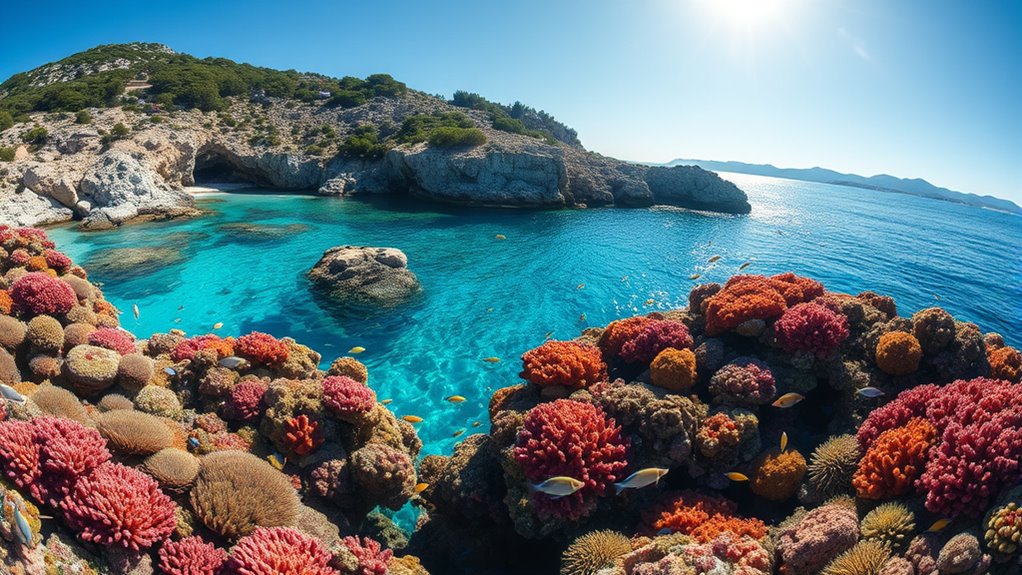
Scientific research plays an essential role in understanding and protecting the marine ecosystems near Alghero. The Capo Caccia–Isola Piana MPA, established in 2002, safeguards species like Posidonia oceanica, coralligenous reefs, red coral, and bottlenose dolphins. Its zones—strict no-activity, protection, and partial—allow targeted conservation and sustainable use. Recognized as a SPAMI in 2009, the area benefits from spatial modeling to identify critical habitats, supporting effective management. Regional conservation networks, such as the IMAP-MPA project, foster collaboration among scientists, local communities, and stakeholders, promoting inclusive, sustainable practices. Partnerships with institutions and NGOs enhance monitoring and enforcement, ensuring long-term protection. These efforts, along with cross-border initiatives like SEMPPA, strengthen regional cooperation, advancing biodiversity preservation and the resilience of marine ecosystems near Alghero. Support from recent EU projects further enhances research and conservation activities in the region, helping to ensure the protection of its unique marine biodiversity. Additionally, marine spatial planning tools are employed to optimize the use of marine space while conserving ecological integrity.
Frequently Asked Questions
What Are the Main Threats to Marine Biodiversity Near Alghero?
You should know that marine biodiversity faces multiple threats. Coastal tourism and boating disturb species like dolphins, while habitat loss from infrastructure and seabed damage from trawling degrade ecosystems. Pollution from land runoff and microplastics harms marine life, and invasive species threaten native biodiversity. Overfishing, illegal harvesting, and resource conflicts further weaken ecosystems, making it essential to implement stricter regulations, monitoring, and conservation efforts to protect this rich marine environment.
How Do Local Communities Participate in Conservation Efforts?
Have you ever wondered how local communities can actively help conserve their marine environment? Your participation is vital, from early planning to ongoing management. By engaging in decision-making, sharing traditional knowledge, and promoting sustainable practices, you help build trust and legitimacy. Regular communication and capacity building empower you, ensuring conservation efforts align with your values. When communities are involved, protection becomes more effective and long-lasting, benefiting everyone.
Are There Any Endangered Species Specifically Protected Within the MPA?
You’ll find that many endangered species are actively protected within the MPA. For instance, the European storm petrel and Scopoli’s shearwater nest here, and advanced GPS studies help monitor their movements. Marine mammals like bottlenose dolphins, minke whales, and protected sea turtles also benefit from this conservation effort. Additionally, endangered fish such as the noble pen shell and overfished species like brown groupers thrive, thanks to strict regulations and habitat protection.
What Are the Restrictions for Commercial Fishing in the Protected Areas?
You want to know about restrictions on commercial fishing. In protected areas, commercial fishing is mostly banned, especially using high-impact gear like trawls and large nets. You can’t fish commercially in no-take zones, and even in adjacent zones, certain gear types are restricted or prohibited. You need permits for authorized activities, and enforcement is strict. These rules help safeguard fish stocks, support ecological balance, and ensure sustainable fishing practices.
How Does Climate Change Impact the Ecosystems of the MPA?
So, climate change is throwing a wild party in your protected marine area, and everyone’s invited—except the marine life! Temperatures rise, habitats heat up and degrade, and species struggle to survive. Ocean acidification and deoxygenation turn friendly waters into chemical soup, while rising seas drown crucial habitats. You’re left with fragmented ecosystems, less biodiversity, and struggling fisheries—proof that even protected areas aren’t immune to Mother Nature’s mood swings.
Conclusion
Exploring the marine protected areas near Alghero shows how safeguarding these waters benefits both nature and you. By respecting regulations, you help preserve vibrant habitats and diverse species, ensuring they thrive for generations to come. Think of it as tending a delicate garden—you reap the beauty and bounty when you nurture it carefully. When you visit, embrace sustainable practices and become part of the effort to keep these underwater treasures alive and flourishing.
